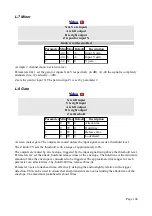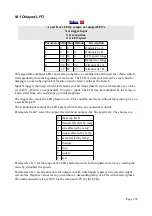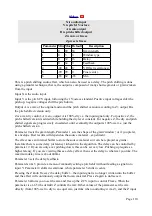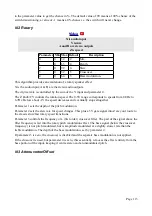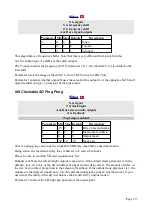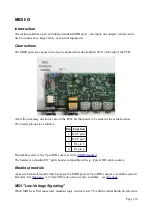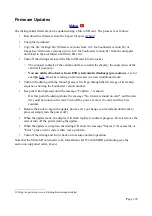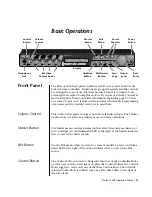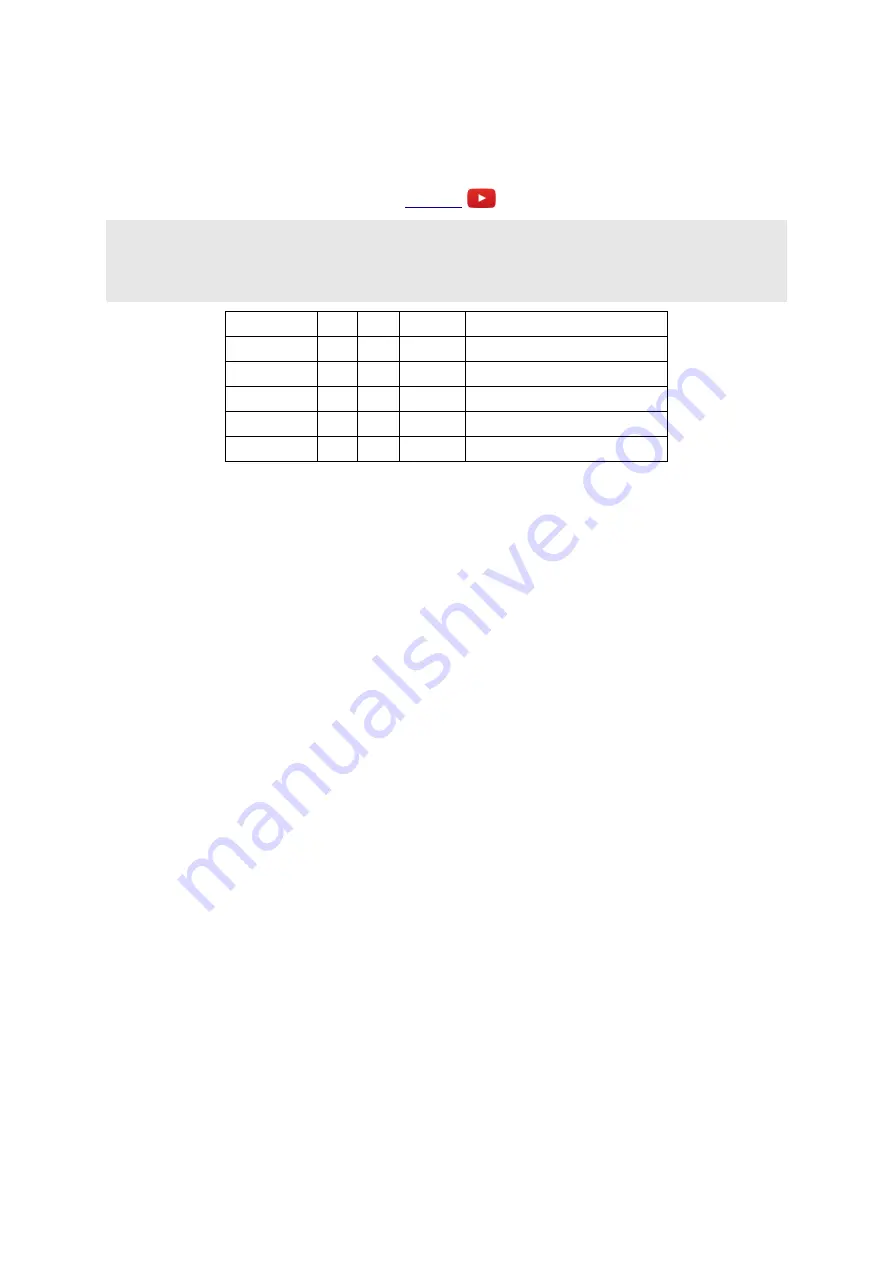
to the parameter value to get the chance in %. The default value of 99 means a 100% chance of the
switch transitioning; a value of -1 means a 0% chance i.e. the switch will never change.
N-2 Rotary
X is audio input
Y is mix
A and B are stereo outputs
Z is speed
Parameter Min Max Default
Description
0
0
32
32
Mix.
1
0
63
24
Depth.
2
0
99
10
Slew.
3
0
32
15
Crossover.
4
0
64
15
Bass modulation.
This algorithm provides an emulation of a rotary speaker effect.
X is the audio input; A & B are the stereo audio outputs.
The dry/wet mix is controlled by the sum of the Y input and parameter 0.
The Z knob/CV controls the rotation speed. The 0-5V range corresponds to speeds from 0.8Hz to
6.7Hz. Below about -1V the speed decreases and eventually stops altogether.
Parameter 1 sets the depth of the pitch modulation.
Parameter 2 sets the slew rate for speed changes. This plus a 5V gate signal into Z are your route to
the classic slow/fast rotary speed transitions.
Parameter 3 controls the frequency of a (first order) crossover filter. The part of the signal above the
filter frequency is fed into the rotary pitch modulation effect. The bass signal (below the crossover
frequency) is not pitch modulated, but is amplitude modulated at a slightly slower rate than the
treble modulation. The depth of the bass modulation is set by parameter 4.
If parameter 3 is zero, the crossover is disabled and the separate bass modulation is not applied.
If the crossover is used, but parameter 4 is zero, this essentially removes the effect entirely from the
bass portion of the input, keeping it centre stereo and at unmodulated pitch.
N-3 Attenuverter/Offset
Page 113






